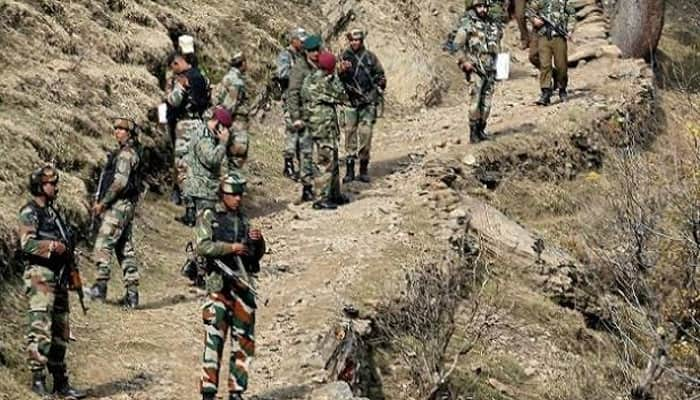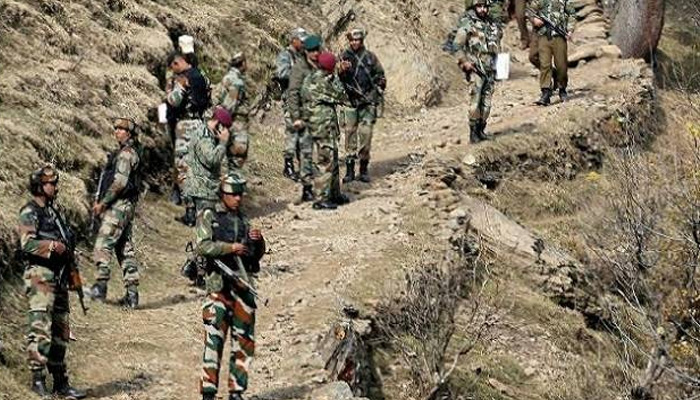In what appears to be a multi-front deliberate ploy by China to keep India on its toes, the Indian Air Force was forced to rush its fighter jet patrols in Ladakh after Chinese military choppers were found to be flying close to the Line of Actual Control. This incident happened last week, around the same time the PLA troops and Indian army forces came to blows in the upper reaches of North Sikkim.

“The Chinese military helicopters were flying very close to the Line of Actual Control. After their movement was picked up, the Indian Air Force fighter jets flew patrols in the area,” government sources told ANI here.
According to reports,last week fully-armed troops of Indian and Chinese armies were locked in a tense stand-off in Eastern Ladakh, indicating that the clash on the night intervening May 5 and 6 between the two sides is still simmering.
Troops of the People’s Liberation Army (PLA) of China are holding ground at a position on the north-bank of Pangong Tso Lake. Some 80-100 troops form what is the “front” for the stand-off of each country.
This is just a few hundred metres away from the spot where troops of both sides clashed in the small hours of May 6, and even pelted each other with stones resulting in injuries to several people on either side.
Some 1,200 troops are in a back-up location of China. India has reinforced its position militarily, sources said, asking for the exact numbers to be avoided.
The Indian troops are at a location India perceives as its own territory along the disputed Line of Actual Control (LAC). The Chinese dispute Indian claims at this particular location and their troops are stationed just across. The Chinese do not have a post at this location. They normally come for patrol and return.
The Indian Air Force frequently flies its Sukhoi 30MKI fighter aircraft fleet from Leh air base in Ladakh along with other planes.
This latest development comes soon after the Indian security establishment noticed that Pakistani Air Force increased its patrols of F-16S and JF-17s along its Eastern Border with India, especially night sorties, after the Handwara terror attack that led to the death of 5 Indian security personnel. A fear of retaliation by Indian forces was cited as the reason by Indian security establishment sources for this ramping up of PAF air patrols.
Sources said the matter had been ‘bubbling’ since February when the PLA stopped an Indian patrol at a location called “Finger 2” on the north bank of Pangong Tso, a 135-km glacial melt lake which straddles India and China, at an altitude of 13,000 feet.
“Finger 2’ is not disputed, and is held by India. A fully-paved Indian road exists in the place. The movement of the Chinese in this area was a red-herring for the Northern Command.
India retaliated and stopped Chinese patrol at locations much ahead, or eastwards, of “Finger 2’. Since the perception of LAC varies the patrolling parties of either country stop the other one and ask to return. There is a laid-down protocol on such interactions and both parties are expected to return.
During the stand-off, the Indian Air Force was asked to fly in a pair of Sukhoi30 MKI after helicopters of China were seen flying on their side. As per existing arrangements, fighter jets maintain a certain distance from the LAC.
The Indian Air Force has two main bases in the Ladakh union territory including the Leh and the Thoise airbase where fighter jets are not deployed permanently but detachments from combat aircraft squadrons are operational throughout the year.There have been several occasions in the past when Chinese military helicopters have entered Indian airspace in the Ladakh sector and deliberately left behind tell-tale signs to stake claim on areas which are part of India. The LAC in this location, like in other parts of the India-China border in the country, is poorly demarcated, hence incursions sometimes are inadvertent as well.
However, the scuffle with Indian troops in North Sikkim was a new front opened up by China which was a cause for concern. Ever since the outbreak of Covid-19, Chinese President Xi Jinping is under immense pressure to increase transparency in his country and reveal the real origin of the virus, which some have speculated emanated from a lab in China’s Wuhan. Trade wars with countries like USA and Australia have intensified and most multi-national companies have actively begun looking for manufacturing alternative,India being one such preferred destination.
Security sources speculated that this could be the reason behind China’s new aggression. Similar muscle flexing was also seen recently when PLA Navy boats entered into disputed waters in the South China Sea.
